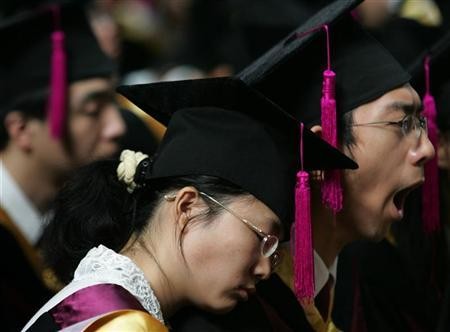At the China-U.S. Joint Commission of Commerce and Trade summit in Chicago on Thursday, Liang Xinjun, CEO of the private Shanghai-based Fosun Group, told the media that "consumption in China will be the main driving power of the global economy in the future."
While education was not an explicit priority of the summit, China's Ministry of Education released data on Friday that shows that China is now the top global exporter of Chinese students.
The data also contains figures that make the exponential growth of the Chinese international student sector clear: Between 1978 and 2013, the cumulative total of students was close to 3 million, while from 2001 to 2013, the number of Chinese students who returned to their homeland from periods abroad increased from approximately 11,000 to 350,000.
The exponential trend has also worked in the opposite direction, as China has about 360,000 people from other nations studying within its borders now, compared to a mere 1,200 students 36 years ago.
Overseas placements for Chinese students include over 100 countries, which is a considerable development upon the Japan- and U.S.-centric approach prior to the policy of open interaction that now underpins the giant east Asian economy. The Chinese government has established agreements with over 40 countries and regions.
Research data from the HAYS professional recruitment agency provides insights into the vocational direction of Chinese students who study overseas after they graduate. Of almost 500 study participants interviewed, 67 percent aspire to work in foreign-funded companies, while just over half believe that they can find work in China within three months, which indicates a high level of optimism.



























